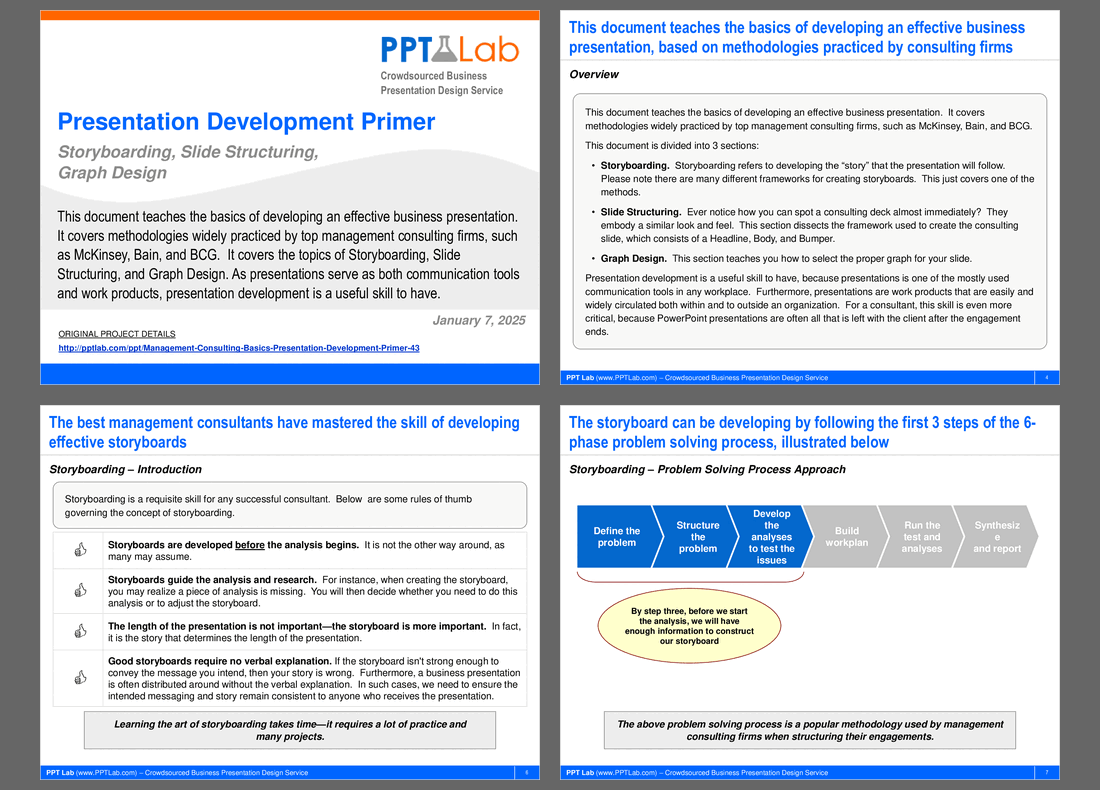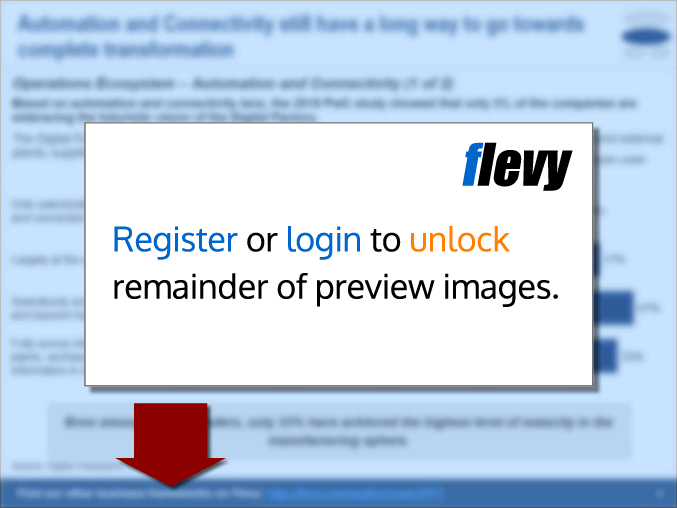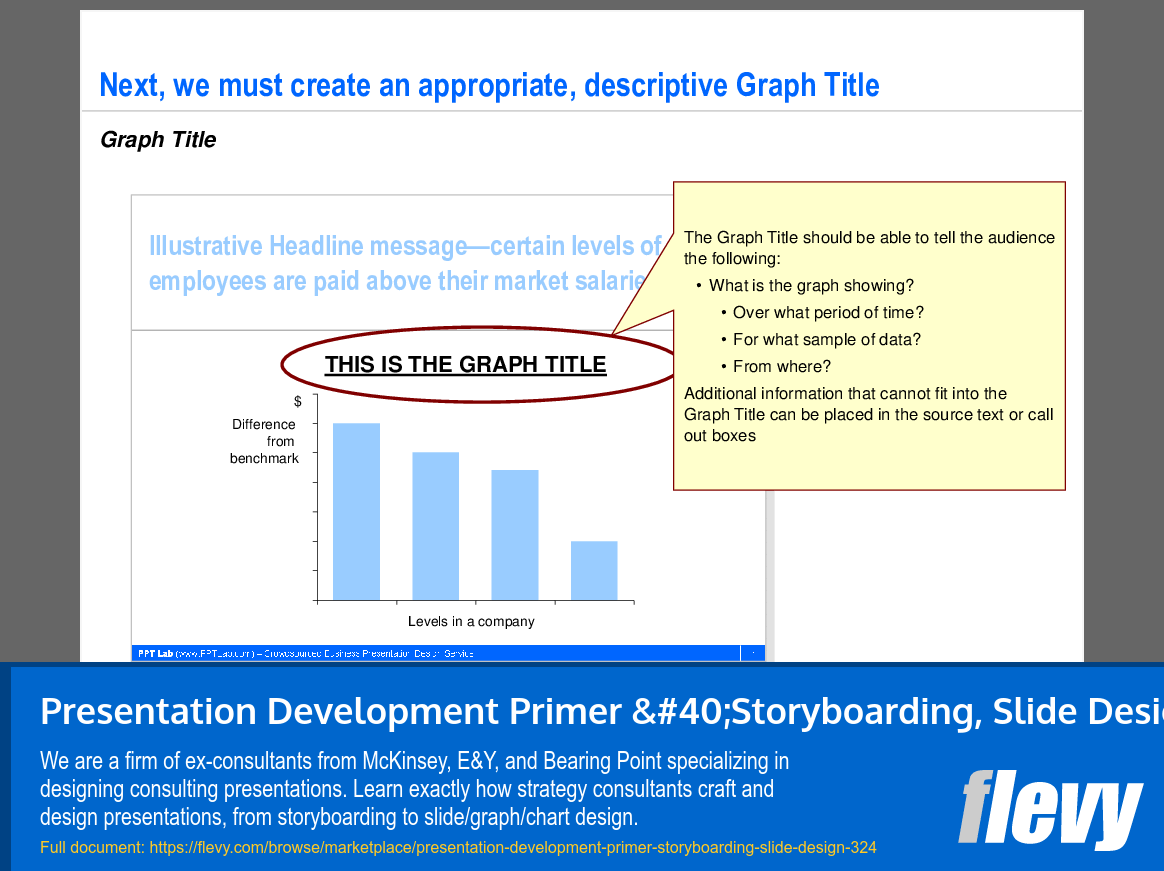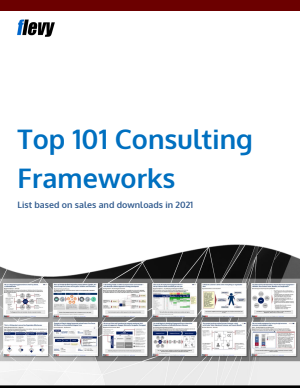Presentation Development Primer (Storyboarding, Slide Design) (PowerPoint PPT Slide Deck)
PowerPoint (PPT) 28 Slides
PRESENTATION DEVELOPMENT PPT DESCRIPTION
This document teaches the basics of developing an effective business presentation. It covers methodologies widely practiced by top management consulting firms, such as McKinsey, Bain, and BCG. This document is divided into 3 sections:
*Storyboarding. Storyboarding refers to developing the "story" that the presentation will follow. Please note there are many different frameworks for creating storyboards. This just covers one of the methods.
*Slide Structuring. Ever notice how you can spot a consulting deck almost immediately? They embody a similar look and feel. This section dissects the framework used to create the consulting slide, which consists of a Headline, Body, and Bumper.
*Graph Design. This section teaches you how to select the proper graph for your slide.
Presentation development is a useful skill to have, because presentations is one of the mostly used communication tools in any workplace. Furthermore, presentations are work products that are easily and widely circulated both within and to outside an organization. For a consultant, this skill is even more critical, because PowerPoint presentations are often all that is left with the client after the engagement ends.
The storyboard can be developed by following the first three steps of the six-phase problem-solving process: defining the problem, structuring the problem, and developing the analyses to test the issues. This approach ensures that the presentation narrative is built on a solid foundation of problem identification and structured analysis, which is critical for delivering impactful insights to stakeholders. Before performing any analysis, hypothesizing expected findings helps in aligning the story with potential outcomes, making the final presentation more coherent and persuasive.
The document also addresses common concerns about the storyboarding process, such as changes in data or message post-analysis and ensuring all data fits within the storyboard. It emphasizes the importance of being concise and delivering a clear message, which resonates well with clients. Specific font styling rules are outlined to maintain consistency across slides, reinforcing the professional look and feel of the presentation. The guidelines for the Bumper message ensure that each slide concludes with a compelling takeaway, prompting the audience to consider the implications of the presented data.
Got a question about the product? Email us at support@flevy.com or ask the author directly by using the "Ask the Author a Question" form. If you cannot view the preview above this document description, go here to view the large preview instead.
Source: Best Practices in Presentation Development PowerPoint Slides: Presentation Development Primer (Storyboarding, Slide Design) PowerPoint (PPT) Presentation Slide Deck, PPT Lab
PRESENTATION DEVELOPMENT PPT SLIDES











